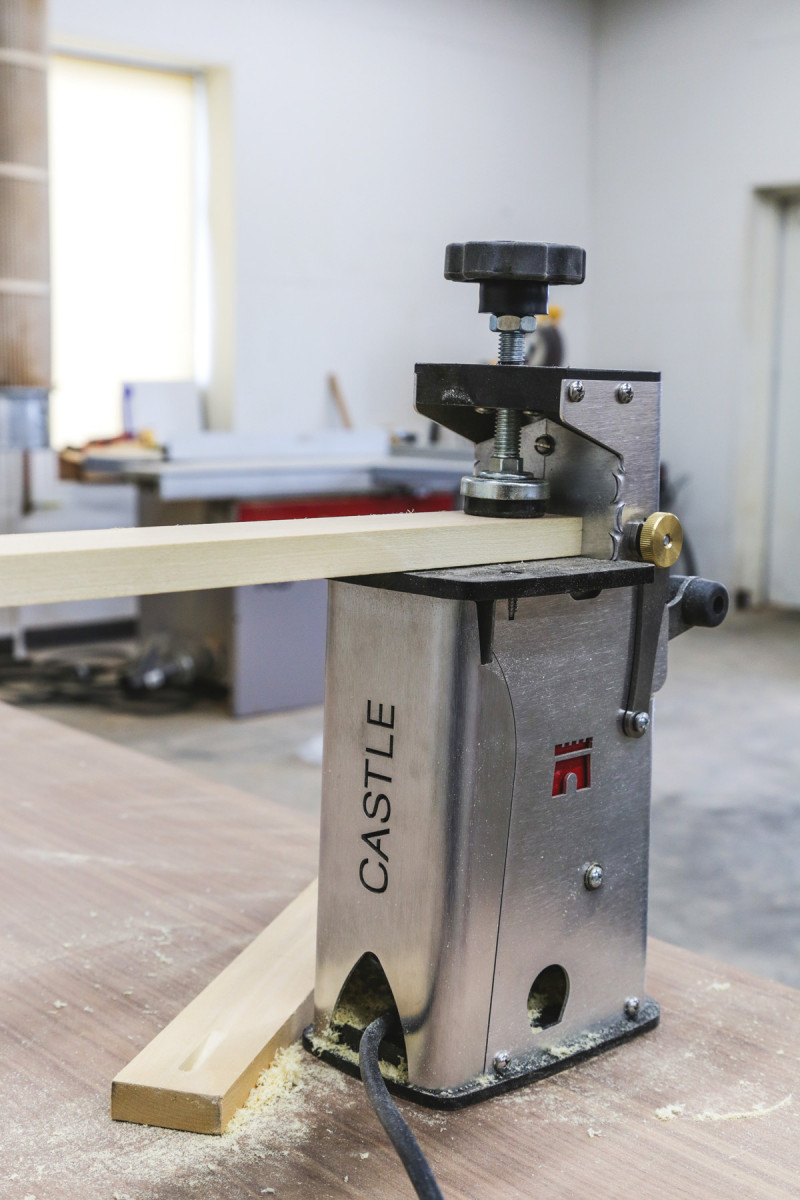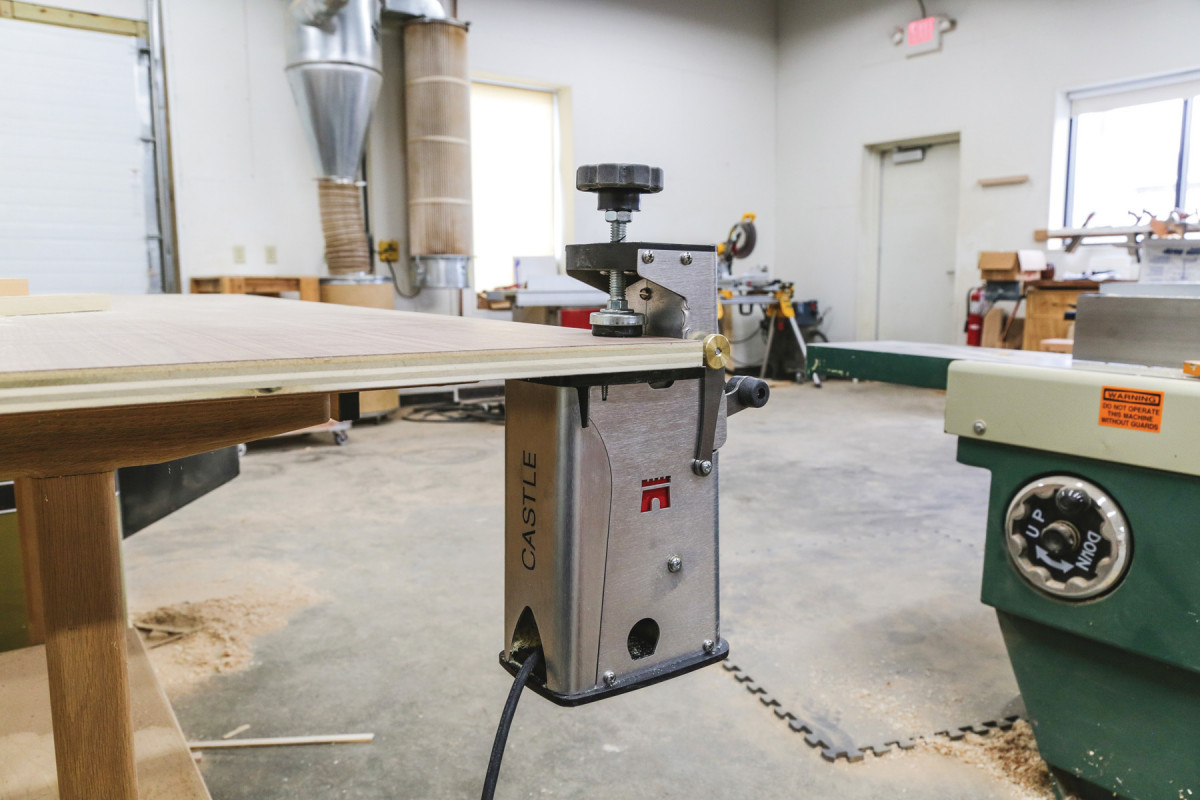We may receive a commission when you use our affiliate links. However, this does not impact our recommendations.

Pocket holes are my go-to for quick and easy assemblies – shop furniture and jigs made out of plywood – as well as making face frames and cabinets.Castle’s newest pocket hole machine, the Castle 100, puts the features of their larger, floor-standing models into a format that fits in the small shop – the machine stands about 14″ tall.
This machine may be different than other pocket hole jigs you’ve used. It’s a two-step process. First, a router (a Bosch Colt) cuts the pocket. Then you use a drill and guide to drill the pilot hole.
 Castle’s pocket holes are cut at a shallower angle (6 degrees) than other jigs and machines on the market. In practice, that means there’s less of a tendency for things to go out of alignment as you’re joining pieces (Castle calls this “joint shift”). I was able to get by just holding pieces in place with my hand while I assembled my face frames. And, dealing with big parts, you can take the machine to your piece – just clamp it on and cut. The small size also means you can bring it with you on location. Pocket holes often solve otherwise tricky fastening/joining problems during an install.
Castle’s pocket holes are cut at a shallower angle (6 degrees) than other jigs and machines on the market. In practice, that means there’s less of a tendency for things to go out of alignment as you’re joining pieces (Castle calls this “joint shift”). I was able to get by just holding pieces in place with my hand while I assembled my face frames. And, dealing with big parts, you can take the machine to your piece – just clamp it on and cut. The small size also means you can bring it with you on location. Pocket holes often solve otherwise tricky fastening/joining problems during an install.
The Castle 100 comes ready to go out of the box. It’s held in place with the included Wilton C-clamp, and comes with a dust collection port. It’s designed to work with 3⁄4” material –other dimensions need a little jigging. While the machine is not inexpensive, if you use a lot of pocket holes and 3⁄4” material in your work, it’s worth the cost.
— Andrew Zoellner
Here are some supplies and tools we find essential in our everyday work around the shop. We may receive a commission from sales referred by our links; however, we have carefully selected these products for their usefulness and quality.








